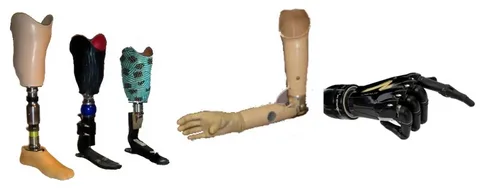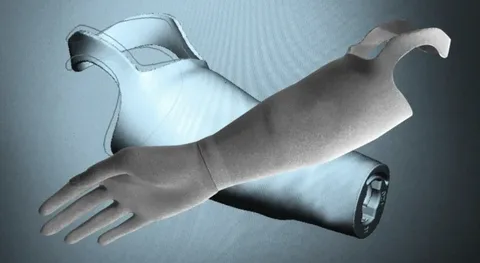Introduction The prosthetics and orthotics market is experiencing unprecedented growth, driven by advancements in technology, aging populations, and a rise in the number of people living with disabilities. From USD 6.76 billion in 2023, the market is projected to reach an estimated USD 9.84 billion by 2032. This expansion underscores the increasing demand for prosthetics (artificial limbs) and orthotics (external devices that support, correct, or aid in the function of parts of the body). As…
Introduction The field of prosthetics has evolved from simple wooden and metal constructs to highly engineered devices designed for functionality and aesthetics. Thanks to cutting-edge developments in materials science, modern prosthetics now feature lightweight and durable components that can withstand the rigors of daily use while remaining comfortable for the wearer. These advancements have been made possible by materials like carbon fiber, titanium, and medical-grade silicone, each offering distinct advantages for specific types of prostheses.…
Introduction Advancements in medical technology have made prosthetics more adaptable and customizable than ever before. Whether you’re an athlete looking for high-performance limbs or someone aiming to regain day-to-day functionality, the variety of prosthetic options available can accommodate a broad range of lifestyles and goals. However, the process of choosing the right prosthesis involves more than just picking a device. It’s about understanding your unique needs, considering your activity levels, and aligning your personal goals…
Introduction The journey of adapting to a prosthesis is a unique experience, one filled with triumphs and challenges alike. For many individuals, prosthetic use opens doors to regained mobility and independence. However, it also brings with it a set of obstacles that can impact daily life. Among these challenges, hyperhidrosis, limb shape changes, and weakness are some of the most common hurdles faced by prosthetic users. In this post, we will explore these obstacles, understand…
Introduction Polymethyl Methacrylate (PMMA), commonly known as acrylic or plexiglass, is a versatile and widely used material in various industries. Its clarity, durability, and biocompatibility have made it a material of choice in many medical applications, particularly in the field of prosthetics. In the realm of craniofacial reconstruction and ocular prosthetics, Polymethyl Methacrylate (PMMA) plays a pivotal role in the creation of clear rigid orbital prostheses and prosthetic substructures. These devices are critical in…
Introduction The field of prosthetics has undergone significant advancements over the past few decades, leading to the development of more durable, flexible, and patient-friendly devices. Among the many materials used in the creation of prosthetics, Chlorinated Polyethylene (CPE) has emerged as a critical component. This versatile polymer has found numerous applications in the medical industry, particularly in the manufacturing of prosthetic devices. Its unique properties make it ideal for use in medical devices where…
Introduction Soft-tissue prosthetics have undergone a remarkable evolution over the past few decades. Once rudimentary, uncomfortable, and often ineffective, these prosthetics have now transformed into sophisticated devices that closely mimic the natural appearance, texture, and function of human tissue. This evolution is driven by advancements in materials science and engineering, particularly the development of advanced polymers and innovative manufacturing techniques. These breakthroughs are not only enhancing the quality of life for prosthetic users but…







